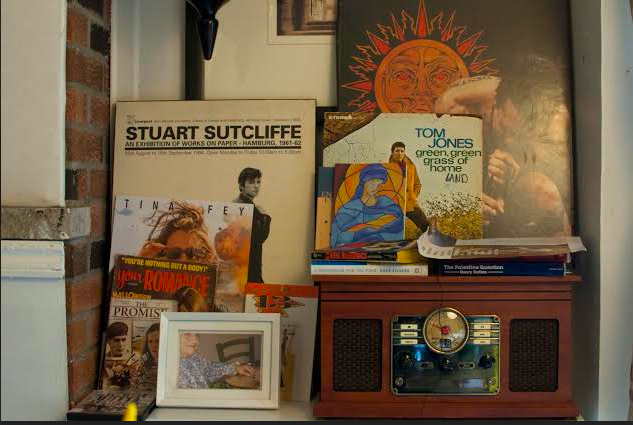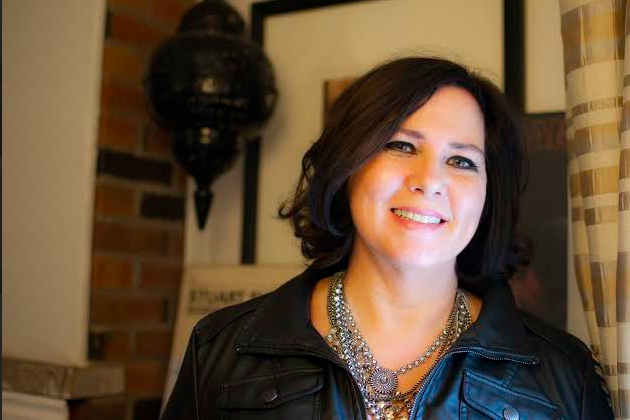Mary-Lou Zeitoun’s first novel was about a 20 th -century teenager. Her latest book is about a woman of the 21st century.
In the much-praised 13, which was set in the period that included the death of John Lennon and the rise of punk rock, Zeitoun took aim at what she calls the “violent sexism in the Catholic Church, as it details a young girl running away from school because her teacher is sexually assaulting her.” Her new novel-in-progress, whose working title is Tin Woman, seeks to be a comedic, picaresque novel that addresses race and class systems of environmental health, poverty and homelessness,” she says.
It is set in a very different era from the grittily exuberant pre-digital 1980s of her first novel, a time before AIDS, 9-11 or Fukushima. Instead, Tin Woman inhabits a world weakened by environmental and political malaise. Zeitoun says her book “endeavours to be a validation of environmental and invisible illnesses, an exploration of exile, poverty and politics and an attempt to dignify the lives of the poor and the sick by telling their stories from the inside out.”

These are critical themes for our time; they resonate especially strongly for Zeitoun, who describes herself as “Palestinian with Israeli family”, and who has also lived for the past 15 years with an auto-immune disorder called Myalgic Encephalomyelitis (ME), also known as Chronic Fatigue Immune Dysfunction Syndrome (CFIDS).
“The National Institutes of Health have just invested millions of dollars on research, and have identified the immune marker that causes it,” she says. Poorly understood by most people, the condition strictly limits her working time and energy. Thus, although much of Zeitoun’s early work had been in theatre, “after I developed ME, it became clear that collaborative, energy-intensive projects for stage and film were beyond my physical capabilities. I can still teach, write and work part-time, but managing this illness often includes being prone for several hours a day and exerting oneself at a measured pace,” she says.
She became a short-story writer and freelance journalist instead, covering the local music scene for eye Weekly and other publications. The flexibility of a freelance schedule allows her to budget her energy, but doesn’t provide the kind of solid foundation required to produce a larger piece of writing with a longer, more drawn-out creation process, so it has been very helpful that she has received funding support for the novel through the Ontario Arts Council (OAC)’s brand-new
Deaf and Disability Arts Projects pilot program, which funds creation, production and professional development.
“It also recognizes Deaf and disability arts as a unique and varied artistic practice,” says Bushra Junaid, Outreach and Development Manager and Access and Career Development Program Officer for the OAC, who is also a member of the OAC’s Disability Arts Committee. The program flows from the OAC’s new strategic plan, which guides the agency’s activity through to 2020. “In it, we identify a number of priority groups, including Deaf artists and artists with disabilities, as part of our commitment to ensuring equitable access to all Ontarians,” Junaid says. “We’re trying to level the playing field for groups that have been historically disadvantaged or continue to face systemic barriers.”
“You will probably note a pattern in the CVs of other disabled artists: momentum is gained and lost, years at a time are quiet. This grant is a shot in the arm; it’s emboldening. It also has connected me with other writers from diverse communities, including disability,” Zeitoun says.

“Just the existence of the Deaf and Disability Arts program is validating and empowering to me as an artist with a disability. Where I was floundering, I am now emboldened, For the next few months I can use my energy to—rather than seek freelance work—research my book.”
In her literary non-fiction, Zeitoun has increasingly been exploring, “what it means to ‘go home’ and what it looks like to work with Israelis towards peaceful co-existence.” She has found herself drawn to teaching and mentoring youth, volunteering with The Arab Community Centre of Toronto, Lifeline Syria and organizations that assist Palestinian youth in Lebanese refugee camps. (She also has a Young Adult novel on the go).
She has spoken on "Voices of Arab Women” a Toronto’s social justice-focused cultural centre Beit Zatoun (no relation), and she’s preparing for a panel on “Writers in the Schools” at the Canadian Writers’ Summit of the Writers’ Union of Canada this June in Toronto. These various threads in her working life are being drawn together around the interlinked issues of working towards a “just peace in the Middle East and women’s rights in the Arab world,” she says. She hopes eventually to move into a consulting role with government agencies working in these areas.
Zeitoun believes the time is right for her voice, and others like her, to be heard. She has recently joined a Facebook group for “Diverse” Canadian Writers that embraces writers from many communities: “LGBT, disabled and of colour—and we all have this sense that I can’t even put into words right now that the world isn’t shown through our point of view, but the world wants to hear from us. I think we’re open to diversity,” she says.
She also foresees an increasing awareness of the urgency of environmental issues, “like what happened in Flint, Michigan with lead poisoning [in the municipal water supply].” Given that ME may be linked to exposure to toxins, “I believe I’m a canary in a coal mine,” she says. “We need more environmental protections.”
These themes have been coalescing in Zeitoun’s work for some time. “When I was writing 13, my super-objective was very clear to me: to delineate what it feels like to go from being a human to just being a female. Now disability as well gender and race seek to define me. To exile me,” she says.
Although her heritage is based on another continent, in Toronto, Zeitoun finds fertile ground to take her writing further. “My work could not have been possible in the Middle East,” she says. “I go to Ireland; I go to the Middle East; I go to Europe; I go to Washington DC, where my sister is… Every time I come back to Toronto as a woman, as an Arab, as person with a disability, and I see all the different coloured faces—there’s so much room for inquiry and for play here: it’s just fascinating. You can write here. You can really experience freedom.”
This story produced in partnership with the Ontario Arts Council